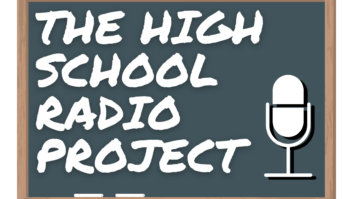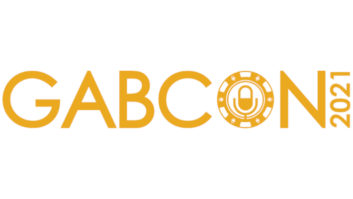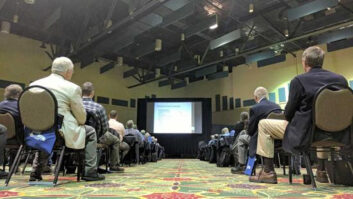Updated Sept. 11 at 4:30 p.m.
The FCC has released data about the number of stations knocked off the air by Hurricane Irma, now downgraded to a tropical storm. As of Monday afternoon, there are 26 stations out of service, 25 of which are in Florida and one in the U.S. Virgin Islands. This information is part of a larger Communications Status Report for Areas Impacted by Hurricane Irma, which also includes data about emergency services, cell services and more.
Hurricane Irma is still making its way up Florida’s peninsula and into the Southeast United States, while recovery has begun throughout affected islands in the Caribbean. And as Mother Nature has been doing her worst, broadcasters have been doing their best to keep stations on air and to inform communities, while keeping staff as safe as possible.
As many Floridians have lost power and gas shortages have rendered generators less useful, radio broadcasters have had to combat many of these same challenges.
Florida Association of Broadcasters President Pat Roberts told Radio World that member stations are “faring and they’re trying to survive.” FAB is headquartered in Tallahassee (the edge of the state’s panhandle), but Roberts still elected to evacuate, moving west to Seaside, near Pensacola, the only area in the state, he noted, that did not take a direct hit from the hurricane, although it did experience a tropical storm.
Due to its scale, Roberts called Hurricane Irma unlike anything he’s ever seen. And that’s saying a lot for a man who has been in the state for more than 30 years and helped broadcasters weather Andrew, Charlie and other memorable, destructive hurricanes during that time.
Despite this, Roberts said that the majority of stations he had spoken with had come through the storm. However, he knew of one station in the Florida Keys that remained on air until Hurricane Irma made landfall, but went off soon after. Fortunately, the staff members survived, although he believes the station was destroyed. Some stations from Miami can reach that area, so residents who did not evacuate will still be able to tune into updates.
Roberts also said that Florida broadcasters learned years ago that radio and TV need to team up during these emergencies (more on that later). He explained that radio can reach people without power, but usually TV stations have much larger newsrooms. This especially important, he said, because people turn to local news and weather during storms like this, rather than cable news.
“This is when you find out the power of broadcast,” he said.
Roberts emphasized that he is proud of all of Florida’s broadcasters and cautioned that the recovery and rebuilding time line will be measured in months and even years.
Now that the storm has passed for much of the peninsula, the most immediate worry is regaining power, or in the case of most broadcasters, acquiring more fuel for generators. About half the state is currently without power, and it will be some time before it can be restored.
Roberts praised the FCC for working with the Dept. of Homeland Security to draft letters allowing fuel trucks to make their way to radio and TV stations. Broadcasters, he said, will be in line just behind hospitals as part of the state’s critical infrastructure.
However, there is one thing he won’t be worried about: selling ads. As soon as stations are back on the air, Roberts said, insurance companies and home improvement stores will be lining up for air time. These ads will also be broadcast alongside PSAs from the government, seeking to organize volunteer relief efforts and warnings, which Roberts will begin to be distributed today.
Beasley Broadcast Group is headquartered in Naples, Fla., on the southwestern edge of the peninsula, on the Gulf coast, and was in the direct path of the storm. Beasley Media Group Vice President of Corporate Communications Heidi Raphael has provided periodic updates about its Florida stations.
At noon on Sunday, Sept. 10, Raphael sent an email saying that Ft. Myers stations (north of Naples, also on the Gulf Coast) WXKB, WJPT, WRXK, WWCN would switch to constant news coverage, with help from NBC affiliate WBBH/TV2 and local cut-ins, and its Spanish-language translator would also provide updates. In Tampa, its English-language stations went all-news as of midnight Saturday with help from WFTS(TV) ABC Tampa and Spanish-language station WYUU(FM) did the same with help from Telemundo. Due to the threat of storm surge, Beasley also urged the majority of the staff to evacuate.
As of Monday morning, she reports that all the company’s FMs are off the air in Ft. Myers; the stations are experiencing “major flooding” at the studios. All of the stations are off in Boca Raton, and two are experiencing difficulty getting programming to the transmitter site. However, Tampa has fared better — WLLD(FM) is the only Beasley station off the air there, and it’s hoped that a generator issue is the cause.
Raphael notes that “Our incredible teams are working around the clock to get things up and running as quickly as possible.”
CBS Radio Miami’s three music stations — WKIS(FM), WPOW(FM) and WQAM(AM) — ran live coverage from CBS4 through the weekend. WOCL(FM) in Orlando took live updates from the CBS affiliate, WKMG(TV) Channel 6, while WOMX(FM) and WQMP(FM) aired a live TV station simulcast. Today, all stations are transitioning back to local programming with frequent hurricane updates from their respective TV partners.
On Sunday, WFOR(TV)/CBS4 in Miami featured an exclusive interview with Vice President Mike Pence, which was also featured on the CBS Radio Miami stations, which the radio station group had secured.
In Miami, public radio station WLRN(FM) was knocked off the air early Sunday afternoon, the New York Post reported. Hurricane Irma damaged the station’s transmitter and engineers were not able to venture outside to do repairs. However, they were able to restore the station’s online presence.
Also, the Orlando Sentinel reported Sunday that a number of Central Florida radio stations planned to air simulcasts of local TV news and weather reports during the storm. These include:
- WESH-Channel 2: WMGF(FM) in Mount Dora, Fla.
- WFTV-Channel 9: The Cox-owned TV station is on these Cox radio stations: WCFB(FM), WDBO(FM), WMMO(FM), WPYO(FM), WWKA(FM), WDBO(AM) and WCFB(HD2 Spanish). In Brevard on WA1A.com, NASHFM1027.com, 95ROCKBrevard.com and SportsRadio1560.com. In Volusia, full simulcast starts at 5 p.m., Sunday, on WHOG(FM), WVYB(FM), WKRO(FM), WLOV(FM) and WNDB(AM/FM).
- Central Florida-based cable channel News 13: As the hurricane moves into the area, viewers will be able to hear WDYZ(AM), WBZW(AM), WTLN(AM/FM),WORL(AM/FM) and WIXC(AM).
- WOFL-Channel 35: WYGM(FM), WTKS(FM) and WFLA(AM). The Sentinel has a content-sharing agreement with WOFL.










